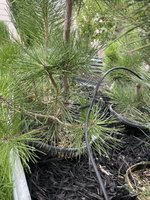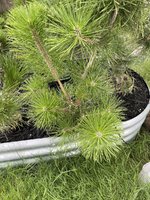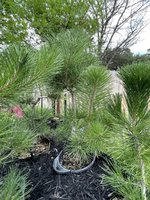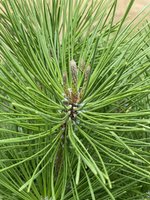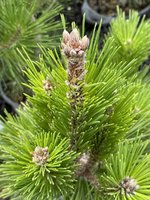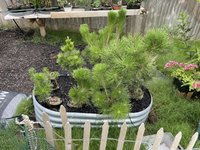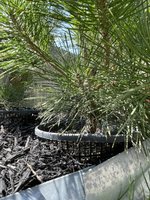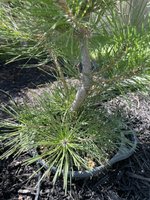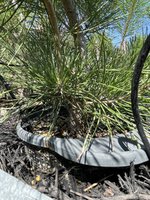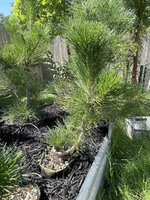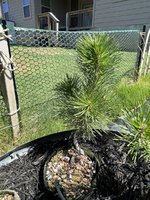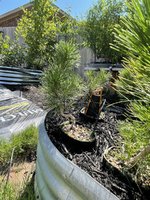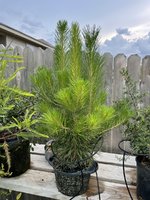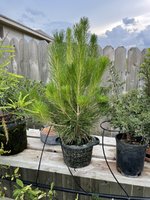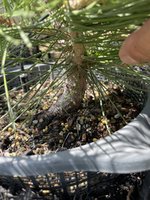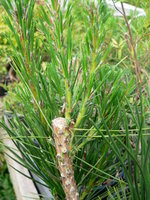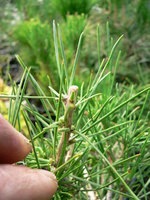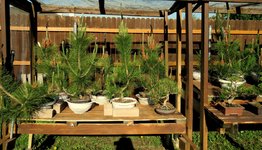No need for apology. That was not meant to be a criticism, just an observation that it is really difficult to give online advice on styling or pruning pines and junipers because there's always some growth in the way when we take photos.
So that lower branch appears to come out at a good angle to become eventual replacement trunk. Always look at other possible branches as well in case there's other options.
In the new pic we can see that one branch -right, horizontal - has a really long bare section so unlikely to be any use because buds won't grow without needles.
The vertical one has a shorter bare neck so might be possible to use that one depending on what size you plan for the tree and where you'll need branches. Branches will come from the new buds that will grow from the base of needles after pruning.
Left, horizontal branch has plenty of (juvenile) needles right down to close to the base so is idea to prune and get good buds you can use later.
Another branch in the background also has good needles close to the base so is also possible future trunk material. You'll need to check and see which of those look better.
decandling is to maintain short growth on mature trees. It will reduce growth to minimum which is good for established pines but not so good when we want trunk thickness and growth. Grow and prune, usually over a 2-4 year cycle, gives growth while still getting short buds to develop branching with. Grow and prune is the method I prefer for development.
I understand that many of us may not have the opportunity to attend face to face clubs, etc. I spent many years of trial and error learning before I had access to a personal help. It is just so much easier to understand the concept when you are holding a tree and the mentor can point and explain or show.
Family should always come first. The trees will still be waiting when the kids have grown and left. Wish your daughter luck in the next game.
I can't see why you'd want to slow the sacrifice branches down. They are meant to grow to provide the most boost to thickening. The only reason to slow a sacrifice is when the lower branches become weak in which case I'll chop the sacrifice to allow the important lower parts to recover and grow.
Pruning any branch back will result in new buds just below the cut. Decandling produces a cluster of buds from the node. Pruning to older needles produces similar buds from each needle just below the chop. Stronger branches will usually produce more buds from more needles. Weaker ones may only get a few new buds.
I seem to get similar response to pruning as to decandling depending on time of year.
Pruning in early spring produces strong new buds that grow long and often have long bare necks.
Pruning early summer yields smaller, shorter new shoots with short bare necks.
Pruning later in summer or Autumn new buds may be delayed until the following spring when the shoots will be strong as in spring pruning.
I've found some file photos that may show how shoots grow from needles after hard pruning. Not sure what time of year these were pruned but shoot extension looks like mid spring prune.
First photo shows shoots from needles after pruning to the lowest remaining needles on a branch.
View attachment 444790
This shows new shoots from a node after pruning back to a previous node - very similar to response after decandling.
View attachment 444791
This shoot was younger when pruned and probably an upper branch - note lots of new buds emerging from base of needles (one from each) right down the remaining branch.
View attachment 444792




